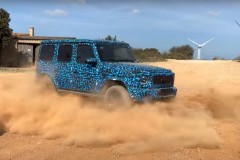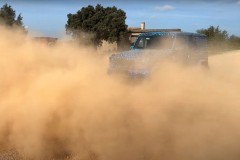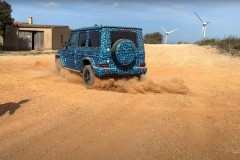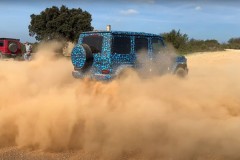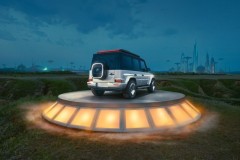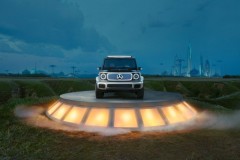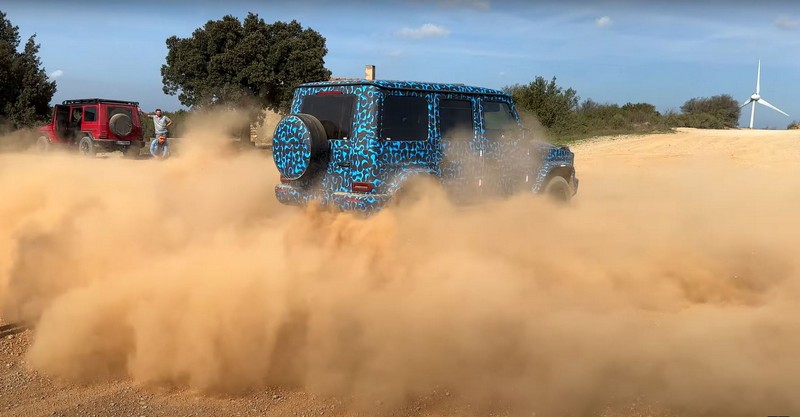
These Are the Technical Highlights of the Upcoming Mercedes EQG, Aka the Electric G-Class
Mercedes has revealed some important technical details of the upcoming electric Mercedes EQG in a reliability test session, two years ahead of its market launch.
In October 2020, Mercedes-Benz unveiled its future strategy that heralded a more accelerated development of the Mercedes-AMG and Mercedes-Maybach divisions and the transformation of the G-Class into a sub-brand in its own right. The new strategy also called for large-scale electrification of these three luxury divisions.
Following the new strategy, Mercedes-Benz presented the concept of an electric G-Class called Mercedes EQG, at the Munich Mobility Show in the fall of 2021. This wasn’t just a styling exercise. It will indeed become a production model in 2024 and it will have off-road capabilities as good as those of the conventional model.
Mercedes-Benz promises that the Mercedes EQG will be able to pass the legendary 5.6 km (3.5 miles) long test track with gradients of up to 60 degrees on the 1,445-meter (4,741-ft) high Schockl mountain in Graz. Thus, the future Mercedes EQG will receive the “Shockl proven” quality certificate which is mandatory for the 463 series, the code name of the conventional version.
To provide the off-road capabilities of the G-Class, which features three lockable differentials and a low-range gear, Mercedes has equipped the EQG with four electric motors, one at each wheel, each mated to a two-speed transmission. This will enable the low-range and high-range functions available on the conventional model. The front motors are mounted low at each wheel, within the axle, and the rear motors are mounted further inboard in a new axle construction similar to the DeDion axle.
Emmerich Schiller, CEO of the new G-Class sub-brand, told British magazine Autocar: “The four electric motor solution is very expensive and complex but that it was the only one that could replace the functions of the three lockable differentials. With three motors, one at the front and two at the rear, the same off-road performance could not be achieved”. Thus, in extreme conditions power could be distributed to only one wheel to maintain traction and not get stuck.
The four-engine layout also allowed the creation of the G-Turn function, which is activated at the touch of a button on the dashboard. With this function, the engines on one side spin the wheels forward, and those on the opposite side spin the wheels backward, so the EQG spins spectacularly on the spot at 360 degrees. The driver can choose to turn left or right using the steering wheel paddles.
To be able to inherit the capabilities of the iconic G-Class, the Mercedes EQG had to retain the separate chassis solution. Therefore, it was not possible to take over the EVA II platform that the EQS builds on. Mercedes-Benz had to adapt the platform of the ICE-powered G. Thus, the EQG can be produced on the same production line by the Magna Steyr partner in Graz, Austria.
The EQG will offer exceptional rigidity because, in addition to the separate chassis, the floor-mounted battery will contribute to the rigidity of the structure. Mercedes announces a net capacity of around 100 kWh for the battery pack, which will use the same technology as the Mercedes EQXX concept. This means that the EQG will have a silicon anode battery made in partnership with Sila, sporting a higher energy density, between 20 and 40% compared with a conventional battery, but also a lower weight.
The battery will be mounted in a fully insulated steel casing that will allow the EQG to pass through water and will have carbon fiber reinforcements to protect it from being hit by rocks and other off-road obstacles.
However, the upcoming Mercedes EQG will not be an athlete and Schiller merely mentioned that the kerbweight will be under 3,500 kg (7,716 lbs). But this figure is very high compared to the 2,490 kg (5,490 lbs) the Mercedes G 550 comes with. Despite the new battery technology, its weight remains substantial.
Like other Mercedes-Benz models, the EQG will have the classic Eco, Comfort, and Sport driving modes plus Trail, Rock, and Sand off-road modes and the driver will be able to preset the speed in the off-road. As with other Mercedes EQ models, the driver will also be able to choose between three recuperation levels: – D-, D, and D+.
Mercedes didn’t give any details about range and output. But Schiller said there will be several power versions and a top AMG variant that will offer acceleration as quick as the current top-of-the-line Mercedes-AMG G 63 equipped with the 585 ps (577 hp) twin-turbo V8.
With an angular body like the conventional model, but distinguished by a different bumper and closed radiator grille, the EQG will not impress with a very low drag coefficient. So we expect the Cd to be quite far from the 0.20 record figure of the EQS electric sedan. The four engines will need a lot of energy, so we estimate that the 100 kWh battery will not be able to offer a range of more than 500 km (311 miles).
As with other EQ models, Mercedes did not provide a cable compartment under the hood. These will be stored in the side-opening tailgate-mounted compartment, which on the conventional model, is designated for the spare wheel.
No details are given about the price either. But considering the complexity of the powertrain and the large battery, we expect a higher price than that of the AMG G 63, which starts at $179,000.
Article Credits: Răzvan Măgureanu Full Articles: https://www.autoevolution.com/news/technical-highlights-of-the-future-mercedes-eqg-the-electric-version-of-the-g-class-204726.html#
